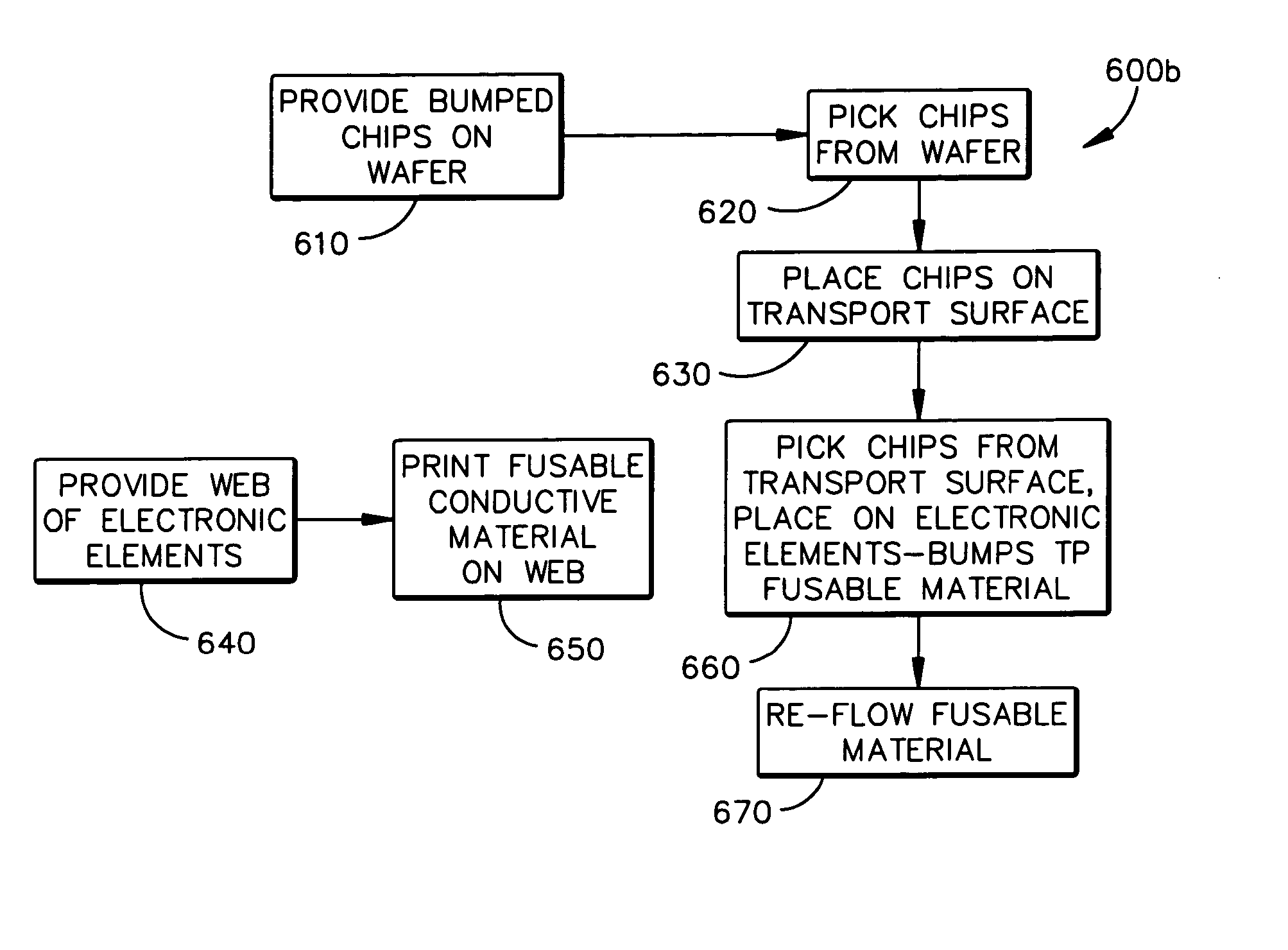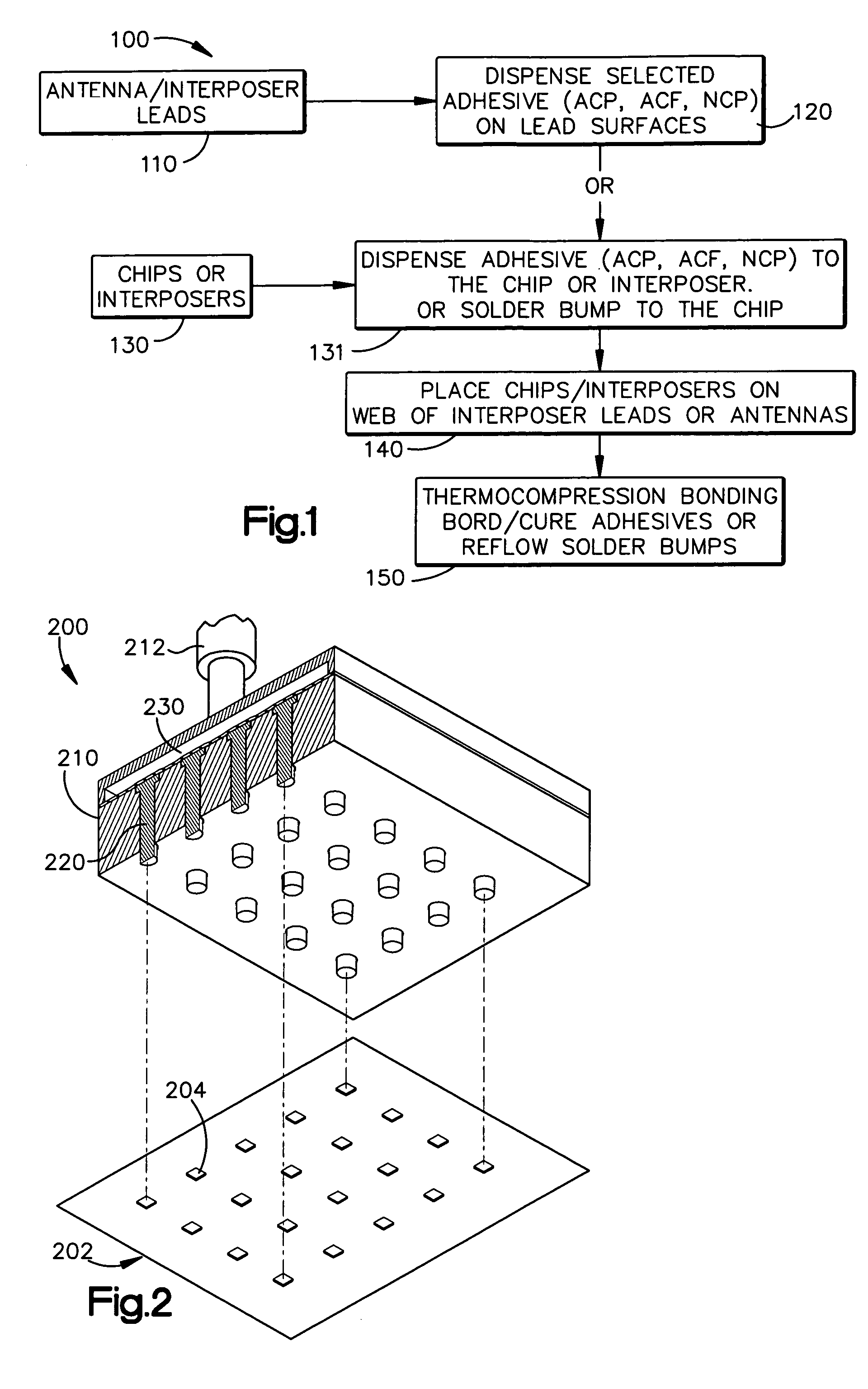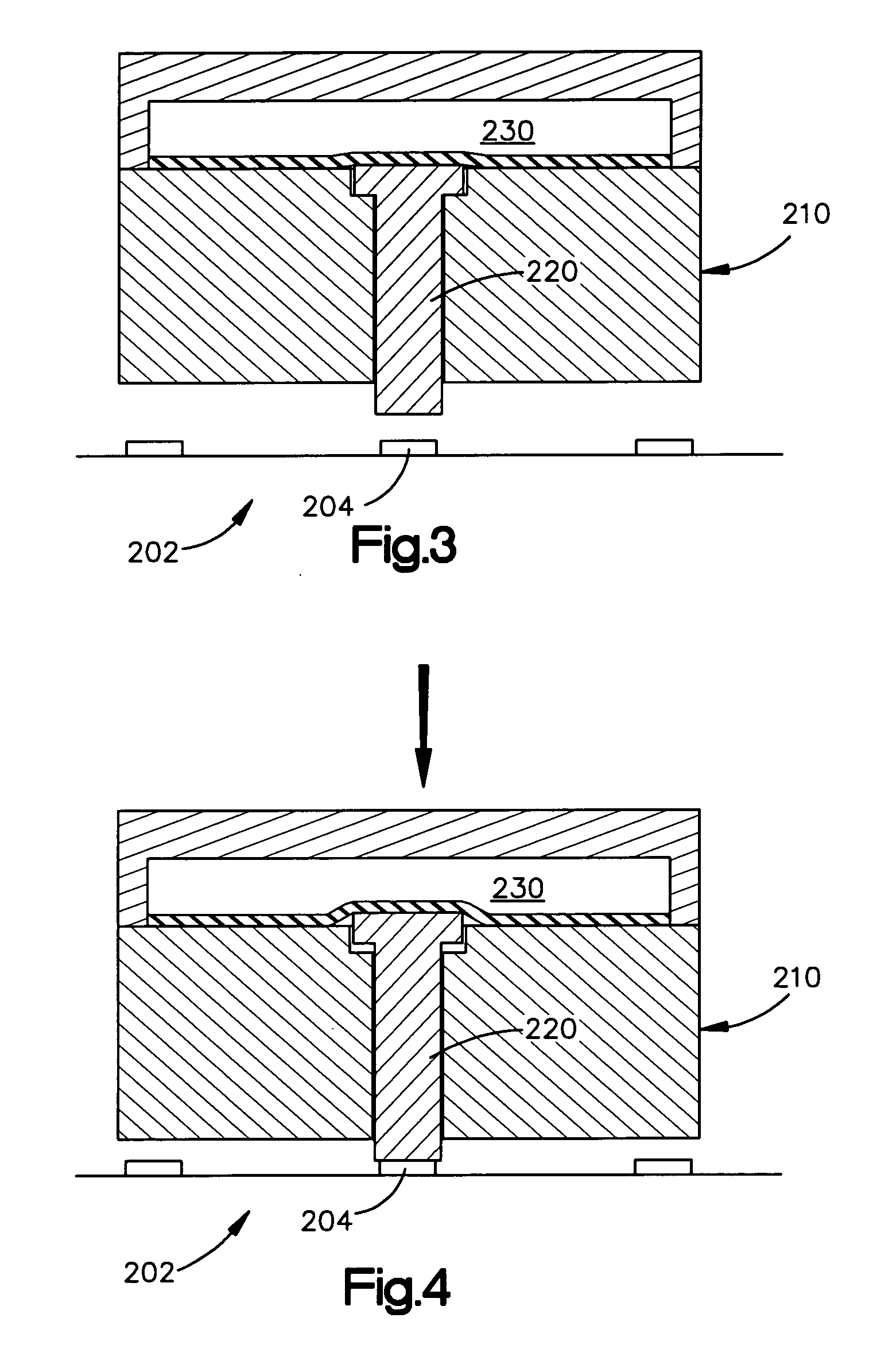High density bonding of electrical devices
a high density, electrical device technology, applied in the direction of basic electric elements, electrical apparatus, semiconductor devices, etc., can solve the problems of large area reducing the accuracy required for placement of ics during manufacture, serious limitations of high-speed manufacturing, and conventional thermocompression bonding devices
- Summary
- Abstract
- Description
- Claims
- Application Information
AI Technical Summary
Benefits of technology
Problems solved by technology
Method used
Image
Examples
Embodiment Construction
[0039] A method of simultaneous thermocompressive bonding of multiple electrical devices using individual heating elements and a resilient member to force the individual heating elements into compressive engagement with the electrical devices is provided. The individual heating elements may be Curie-point heating elements or conventional resistive heating elements. A method of simultaneous thermocompressive bonding of multiple electrical devices using a transparent flexible platen and thermal radiation is also provided. In one embodiment, the thermal radiation is near infra-red thermal radiation and the transparent flexible platen is composed of silicone rubber. The bonding material may be an adhesive or a thermoplastic bonding material. A method of capacitively coupling a semiconductor chip to an electrical component with a pressure sensitive adhesive is also provided. The method includes compressing the chip by forcing a flexible platen of a bonding device into compressive engagem...
PUM
 Login to View More
Login to View More Abstract
Description
Claims
Application Information
 Login to View More
Login to View More - R&D
- Intellectual Property
- Life Sciences
- Materials
- Tech Scout
- Unparalleled Data Quality
- Higher Quality Content
- 60% Fewer Hallucinations
Browse by: Latest US Patents, China's latest patents, Technical Efficacy Thesaurus, Application Domain, Technology Topic, Popular Technical Reports.
© 2025 PatSnap. All rights reserved.Legal|Privacy policy|Modern Slavery Act Transparency Statement|Sitemap|About US| Contact US: help@patsnap.com



